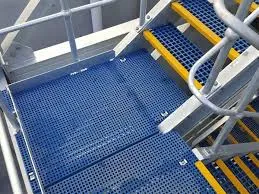
-
 Afrikaans
Afrikaans -
 Albanian
Albanian -
 Amharic
Amharic -
 Arabic
Arabic -
 Armenian
Armenian -
 Azerbaijani
Azerbaijani -
 Basque
Basque -
 Belarusian
Belarusian -
 Bengali
Bengali -
 Bosnian
Bosnian -
 Bulgarian
Bulgarian -
 Catalan
Catalan -
 Cebuano
Cebuano -
 China
China -
 China (Taiwan)
China (Taiwan) -
 Corsican
Corsican -
 Croatian
Croatian -
 Czech
Czech -
 Danish
Danish -
 Dutch
Dutch -
 English
English -
 Esperanto
Esperanto -
 Estonian
Estonian -
 Finnish
Finnish -
 French
French -
 Frisian
Frisian -
 Galician
Galician -
 Georgian
Georgian -
 German
German -
 Greek
Greek -
 Gujarati
Gujarati -
 Haitian Creole
Haitian Creole -
 hausa
hausa -
 hawaiian
hawaiian -
 Hebrew
Hebrew -
 Hindi
Hindi -
 Miao
Miao -
 Hungarian
Hungarian -
 Icelandic
Icelandic -
 igbo
igbo -
 Indonesian
Indonesian -
 irish
irish -
 Italian
Italian -
 Japanese
Japanese -
 Javanese
Javanese -
 Kannada
Kannada -
 kazakh
kazakh -
 Khmer
Khmer -
 Rwandese
Rwandese -
 Korean
Korean -
 Kurdish
Kurdish -
 Kyrgyz
Kyrgyz -
 Lao
Lao -
 Latin
Latin -
 Latvian
Latvian -
 Lithuanian
Lithuanian -
 Luxembourgish
Luxembourgish -
 Macedonian
Macedonian -
 Malgashi
Malgashi -
 Malay
Malay -
 Malayalam
Malayalam -
 Maltese
Maltese -
 Maori
Maori -
 Marathi
Marathi -
 Mongolian
Mongolian -
 Myanmar
Myanmar -
 Nepali
Nepali -
 Norwegian
Norwegian -
 Norwegian
Norwegian -
 Occitan
Occitan -
 Pashto
Pashto -
 Persian
Persian -
 Polish
Polish -
 Portuguese
Portuguese -
 Punjabi
Punjabi -
 Romanian
Romanian -
 Russian
Russian -
 Samoan
Samoan -
 Scottish Gaelic
Scottish Gaelic -
 Serbian
Serbian -
 Sesotho
Sesotho -
 Shona
Shona -
 Sindhi
Sindhi -
 Sinhala
Sinhala -
 Slovak
Slovak -
 Slovenian
Slovenian -
 Somali
Somali -
 Spanish
Spanish -
 Sundanese
Sundanese -
 Swahili
Swahili -
 Swedish
Swedish -
 Tagalog
Tagalog -
 Tajik
Tajik -
 Tamil
Tamil -
 Tatar
Tatar -
 Telugu
Telugu -
 Thai
Thai -
 Turkish
Turkish -
 Turkmen
Turkmen -
 Ukrainian
Ukrainian -
 Urdu
Urdu -
 Uighur
Uighur -
 Uzbek
Uzbek -
 Vietnamese
Vietnamese -
 Welsh
Welsh -
 Bantu
Bantu -
 Yiddish
Yiddish -
 Yoruba
Yoruba -
 Zulu
Zulu
Optimizing GRP Products for Enhanced Steel Smelting Efficiency and Performance
Optimization of GRP Products for Steel Smelting Plants
In the realm of steel manufacturing, the efficiency and quality of production processes are paramount. One of the emerging materials that has garnered significant attention in this sector is Glass Reinforced Plastic (GRP). The application of GRP products within steel smelting plants is revolutionizing traditional methodologies, enhancing overall performance while providing robust solutions to longstanding challenges.
Optimization of GRP Products for Steel Smelting Plants
One of the primary applications of GRP in steel smelting is in the construction of storage tanks for raw materials such as iron ore, coke, and limestone. Typically, these tanks must withstand not only the weight of the materials but also exposure to moisture and chemicals that could corrode traditional storage solutions. Utilizing GRP for these applications significantly reduces maintenance costs while extending the lifespan of storage infrastructure.
grp products for steel smelting plant

Furthermore, GRP systems are increasingly being employed for piping and ducting within smelting operations. The ability of GRP to resist corrosion is particularly beneficial as it prevents leaks and reduces the risk of contamination in the production process. This aspect is crucial because any contamination could compromise the quality of steel produced, leading to increased costs and wastage. The lightweight nature of GRP also facilitates easier installation and retrofitting, allowing smelting plants to adapt more quickly to changing production needs without extensive downtime.
Another innovative application of GRP technology in steel smelting plants is in the development of protective cladding and linings. These serve as a barrier between harsh environmental conditions and critical structural components, further prolonging equipment lifespan. GRP cladding not only protects but can also enhance thermal insulation, leading to better energy efficiency. In a time when energy conservation is paramount for reducing operational costs and environmental impact, GRP’s thermal performance offers an economically viable solution.
Moreover, the integration of GRP products in the operational processes of steel smelting plants aligns with global trends toward sustainable manufacturing. As industries face mounting pressure to reduce their carbon footprints, the adoption of lightweight and recyclable materials like GRP can significantly contribute toward achieving these sustainability goals. Unlike traditional materials that may have considerable environmental impacts over their lifecycle, GRP is often more environmentally friendly both in production and disposal.
In conclusion, the use of GRP products in steel smelting plants underscores a significant shift towards modernizing industrial practices. The numerous benefits of GRP—including superior corrosion resistance, lightweight properties, reduced maintenance costs, and enhanced sustainability—position it as a game-changer in the steel industry. As smelting plants continue to seek innovative solutions to improve efficiency and reduce costs, GRP products are likely to play a vital role in shaping the future of steel manufacturing. On the horizon, advancements in GRP technology and further applications in smelting operations promise to drive continued growth, pushing the boundaries of what is possible in steel production while fostering a more sustainable industrial landscape.
Latest news
-
High-Quality Fiberglass Car Bodies Durable GRP Car & Boat Body SolutionsNewsJul.08,2025
-
High-Quality Fiberglass Dual Lamination Product Manufacturer Durable FRP & GRP Dual Lamination SolutionsNewsJul.08,2025
-
Rectangular Tank with Dimensions for GRP Calculation Custom Fiberglass GRP Rectangular TanksNewsJul.07,2025
-
High-Quality Fiberglass Weir Custom FRP Weir & Fiberglass Tanks ManufacturerNewsJul.07,2025
-
CPVC FRP Pipe A Reliable Choice for Industrial Applications High Strength & Corrosion ResistanceNewsJul.07,2025
-
Fiberglass Scrubber for Effective Cleaning and Stain Removal – Superior Performance in Various ApplicationsNewsJul.06,2025









